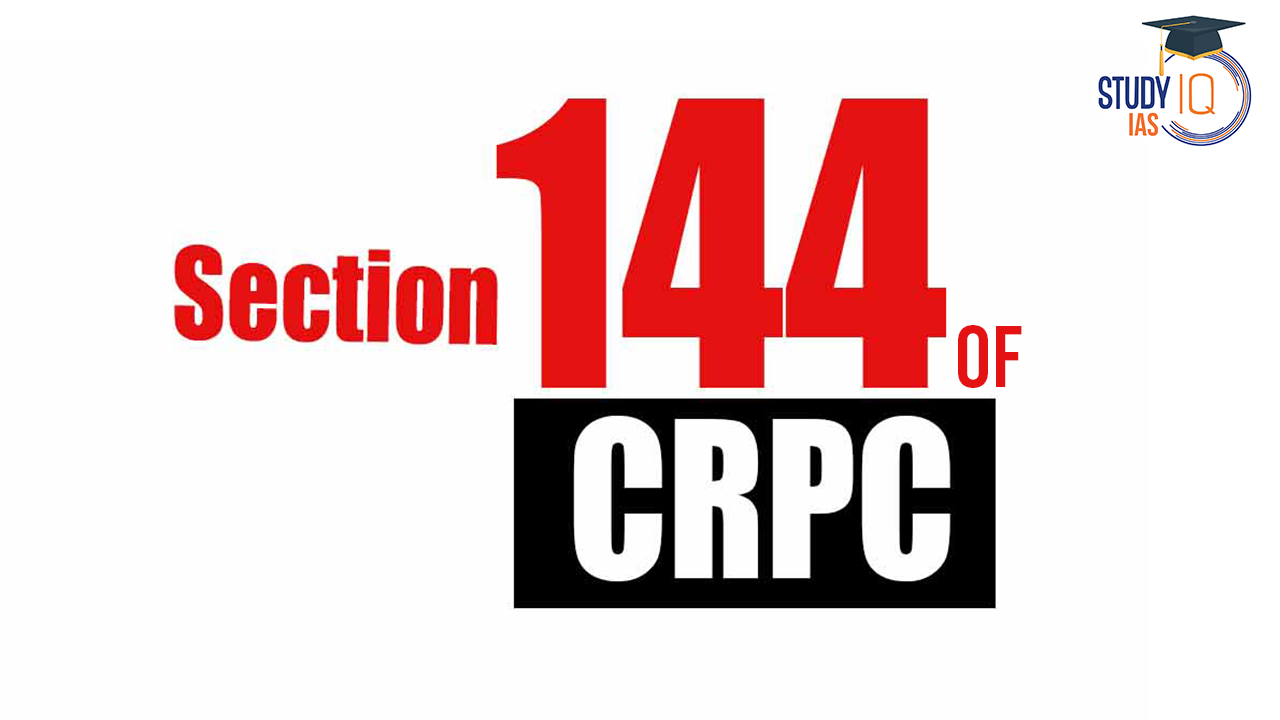Table of Contents
Context: The High Court questioned the Aam Aadmi Party (AAP) on its request to stage a protest in the national capital, despite an existing ban under Section 144 of the CrPC due to ongoing farmers’ protests.
About Section 144 of CrPC
- What is it?: Section 144 of the Criminal Procedure Code (CrPC) 1973 allows an Executive Magistrate to issue orders to prevent the assembly of four or more people in an area.
- Purpose:
- Prevention: Aimed at addressing urgent cases of nuisance or anticipated dangers that may disrupt public peace or cause harm to life and property.
- Prohibition: Primarily bans public gatherings to maintain peace and prevent potential unrest or riots.
- Restrictions:
- Weapon Ban: Carrying weapons in the imposed area is prohibited, with violators facing detention.
- Movement and Assembly: Restricts public movement, closes educational institutions, and bans public meetings or rallies.
- Internet Access: Authorities may block internet access to control the situation.
- Legal Implications
- Punishment: Violation of Section 144 can lead to a maximum of three years in prison.
- Punishable: Obstructing law enforcement in dispersing an unlawful assembly is punishable.
- Duration
- Orders under Section 144 cannot exceed two months but can be extended by the state government for up to six months if necessary.
- The order can be lifted earlier if normalcy is restored.
Supreme Court Judgments on Section 144
- Babulal Parate vs State of Maharashtra: The Supreme Court declined to invalidate the law, upholding its application.
- Dr Ram Manohar Lohia Case (1967): The Court emphasised the importance of public order for democracy, supporting the continuation of Section 144.
- Madhu Limaye Case (1970): Highlighted that the powers granted under Section 144 are judicial in nature and subject to further judicial review, affirming the section’s validity.
- Constitutionality and Article 19(2): The Court has consistently affirmed that Section 144’s restrictions are justified under the “reasonable restrictions” clause of fundamental rights in Article 19(2) of the Indian Constitution.
- Misuse is Not Sufficient Ground: Acknowledged the possibility of misuse of the law but stated that this is not sufficient grounds for its repeal.
We’re now on WhatsApp. Click to Join
| Difference Between Section 144 of CrPC and Curfew |
|


 RTE Act 2009: Right of Children to Free ...
RTE Act 2009: Right of Children to Free ...
 Indus Water Treaty 1960 Suspended by Ind...
Indus Water Treaty 1960 Suspended by Ind...
 5 Years of SVAMITVA Scheme and Its Benef...
5 Years of SVAMITVA Scheme and Its Benef...





















